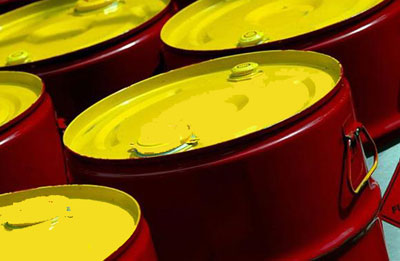
Opec production plunges to 3-year low in March
London, April 12, 2014
The oil production from the Organization of the Petroleum Exporting Countries (Opec) plunged 550,000 b/d from February to 29.56 million b/d in March - its lowest level since mid-2011, according to the latest Platts survey of Opec and oil industry officials and analysts.
The decline followed February production of 30.11 million b/d and was mainly attributable to insurgent attacks which shut a key export pipeline in Iraq, and a renewed downward swing in Libyan production.
Saudi Arabia also reduced output because of lower refining demand due to maintenance. The survey showed Saudi output at 9.6 million b/d, down from 9.7 million b/d in February and the lowest level since June last year, when the kingdom's output was estimated at 9.65 million b/d.
Together, Saudi Arabia, Iraq and Libya accounted for 440,000 b/d of the overall drop, stated the Platts report.
"The Iraqi reduction is viewed as particularly unsettling," remarked John Kingston, Platts global director of news.
"It comes just a month after a huge jump in output that followed improvements to the country's exporting capabilities in the south. Given that the often-troubled northern pipeline continues to get hit by difficulties, I suspect the Iraqi monthly number will continue to be volatile," he added.
According to Kingston, the Iraqi output fell by 200,000 b/d to 3.15 million b/d. The Iraq-Turkey pipeline, which carries Kirkuk crude from Iraq's northern fields to Turkish Mediterranean port Ceyhan, remained out of action more than a month after the early March attacks on the line that forced some northern production to be curtailed.
Iraqi oil minister Abdul Karim Luaibi said Wednesday that the pipeline could become operational in about a week.
Average Libyan production in March slumped to 220,000 b/d from 360,000 b/d in February.
In early 2013, output had recovered to around 1.4 million b/d from virtually zero in 2011 during the uprising against Moammar Qadhafi, but production has since then been a fraction of that level for the better part of a year amid continuing political unrest.
Libya's oil sector has been under siege since May 2013, with production and exports disrupted intermittently by strikes, protests and port blockades.
Last weekend saw the government and rebels strike a deal to reopen the Zueitina and Marsa al-Hariga oil ports, which have a combined export capacity of 180,000 b/d. Loadings have yet to resume. Other important ports, Ras Lanuf and Es Sider, remain closed. The Elephant and Sharara fields also remained shut in.
Early on Wednesday, Opec secretary general and former Libyan oil minister Abdalla el-Badri said Libya could quickly restore output to around 1 million b/d. But he said pre-uprising levels would be more difficult to achieve because repeatedly shutting in wells in the country's major onshore oil fields might have damaged production facilities.
Libya had been pumping approximately 1.6 million b/d before the uprising.
The country's poor security situation could also hamper efforts to bring production back on stream, Badri said.
Smaller production reductions came from Algeria, Angola, Kuwait, Nigeria and the UAE, while Iran boosted output by 30,000 b/d to 2.85 million b/d.
The last time Opec production was this low was in June 2011, when the Platts survey showed output at 29.57 million b/d. Output subsequently climbed, holding above 30 million b/d until September last year.
The group's current 30 million b/d crude output ceiling has been in place since January 2012.-TradeArabia News Service







